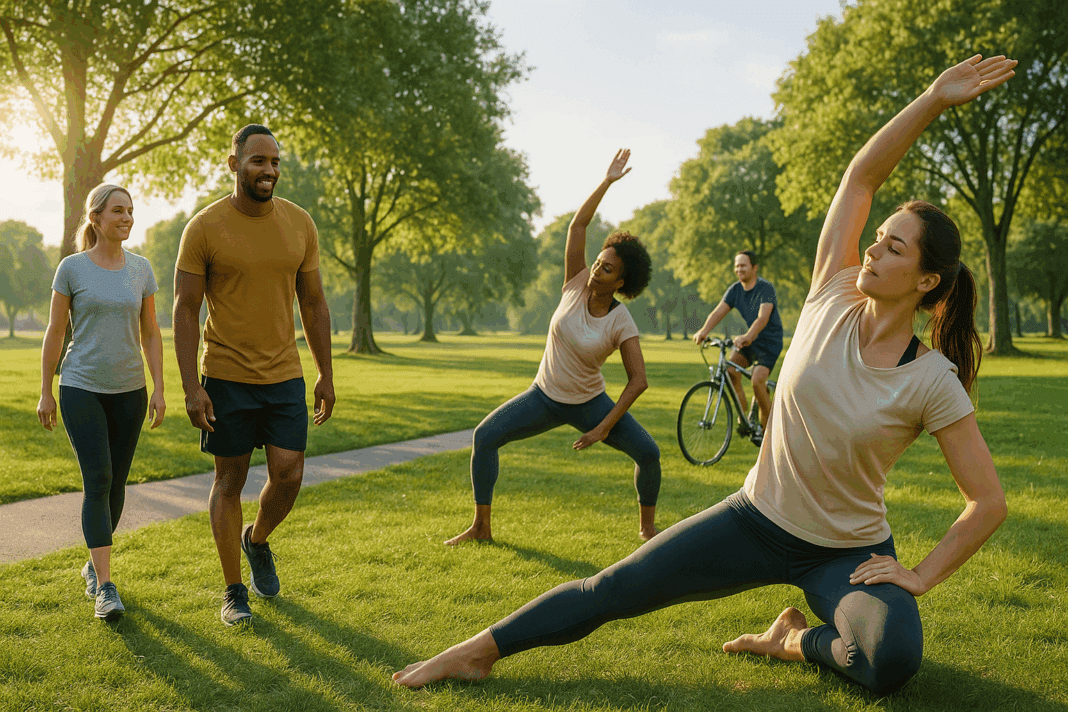Introduction: Reimagining Recovery for Performance and Longevity
Rest is essential for progress, but rest doesn’t always mean doing nothing. In modern strength training and recovery science, active rest days play a pivotal role in enhancing adaptation, preventing injury, and supporting consistent performance. Athletes and fitness enthusiasts alike are increasingly recognizing that movement-based recovery fosters circulation, reduces soreness, and maintains neuromuscular engagement. When integrated strategically, active rest day ideas provide a powerful way to promote healing while keeping the body primed for performance.
A well-structured recovery plan must balance exertion with intelligent recovery training. While full rest days have their place, incorporating activities like mobility work, light cardio, and neuromuscular activation offers both physical and psychological benefits. These practices improve range of motion, stimulate lymphatic drainage, and reinforce movement patterns without imposing excessive strain. The following sections will explore ten powerful and practical active rest day ideas that build lasting strength while keeping the body agile, mobile, and resilient.
You may also like: The Ultimate High-Protein Meal Plan for Weight Loss and Muscle Gain Backed by Science
Walking as a Foundational Recovery Workout
Often overlooked due to its simplicity, walking remains one of the most effective active recovery exercises. A brisk 20–45-minute walk stimulates circulation, elevates endorphins, and improves joint mobility without taxing the central nervous system. Walking also supports spinal alignment and gently engages the posterior chain, particularly when performed with a conscious focus on posture and gait mechanics.
This recovery workout is particularly useful following heavy leg training, as it reduces muscle stiffness through increased blood flow. Terrain variation—such as incorporating gentle inclines or natural trails—can further enhance proprioception and core engagement. Walking is also neurologically calming, making it an ideal active rest day exercise for mental recovery. Whether done outdoors or on a treadmill, its versatility makes it an accessible yet impactful strategy to include in your full body recovery st.

Yoga and Mobility Flow: A Full Body Active Recovery Workout
Yoga, especially in dynamic flow formats like vinyasa or mobility-based routines, serves as a holistic form of active recovery. These sessions emphasize breath control, fascial stretching, and joint articulation, making them one of the best recovery exercises for athletes and lifters. By guiding the body through full ranges of motion, yoga promotes fascial hydration and restores elasticity in connective tissue.
Incorporating yoga into an active rest day workout enhances neuromuscular communication, sharpens balance, and decompresses the spine. For strength-focused individuals, it’s particularly valuable in unlocking tight hips, hamstrings, and thoracic regions—areas often restricted by repetitive lifting. Practices like pigeon pose, downward dog, and twisted lunges are excellent for post-leg recovery workout sessions. With consistency, yoga builds structural integrity and reduces injury risk, making it a vital tool in your recovery training toolkit.
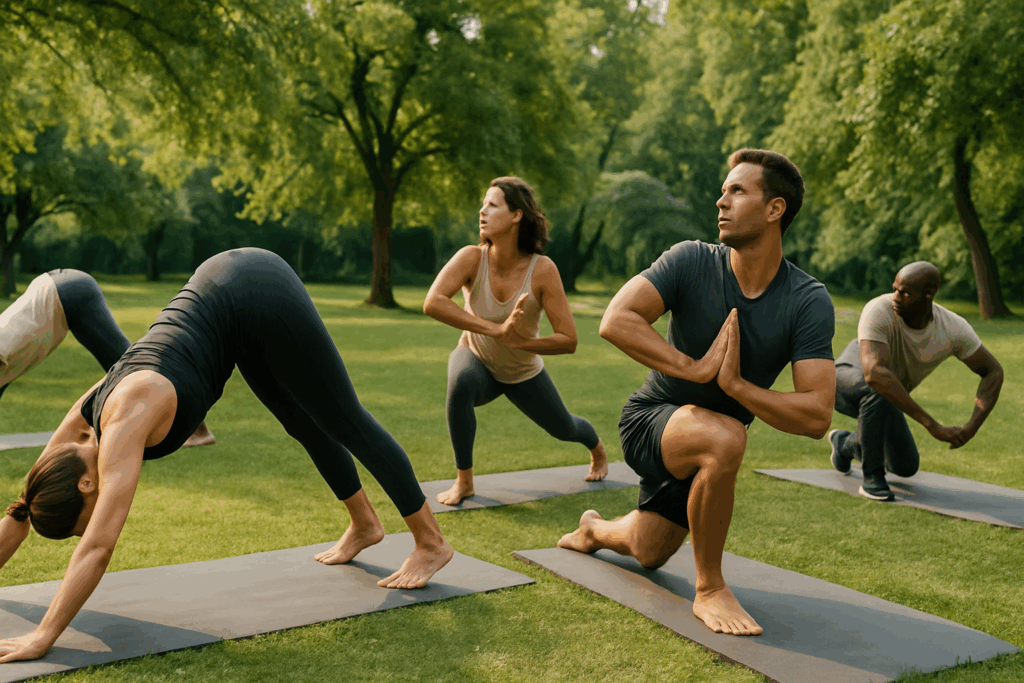
Swimming and Water-Based Recovery Cardio
Water-based exercise offers unique advantages as a low-impact active recovery workout. Swimming provides cardiovascular stimulation while reducing joint load, making it ideal for both high-level athletes and those nursing injuries. The buoyancy of water minimizes gravitational stress, allowing full-body movement without impact trauma.
Swim workouts that alternate between slow laps and floating intervals improve aerobic conditioning and muscular relaxation. Aquatic jogging, underwater walking, or hydrotherapy-based circuits also qualify as effective off day exercises that maintain conditioning while promoting muscle recovery. Additionally, cold water immersion post-swim can enhance lymphatic drainage and blunt inflammation. When performed mindfully, swimming combines aerobic efficiency, therapeutic immersion, and neuromuscular reset into a singular recovery day experience.
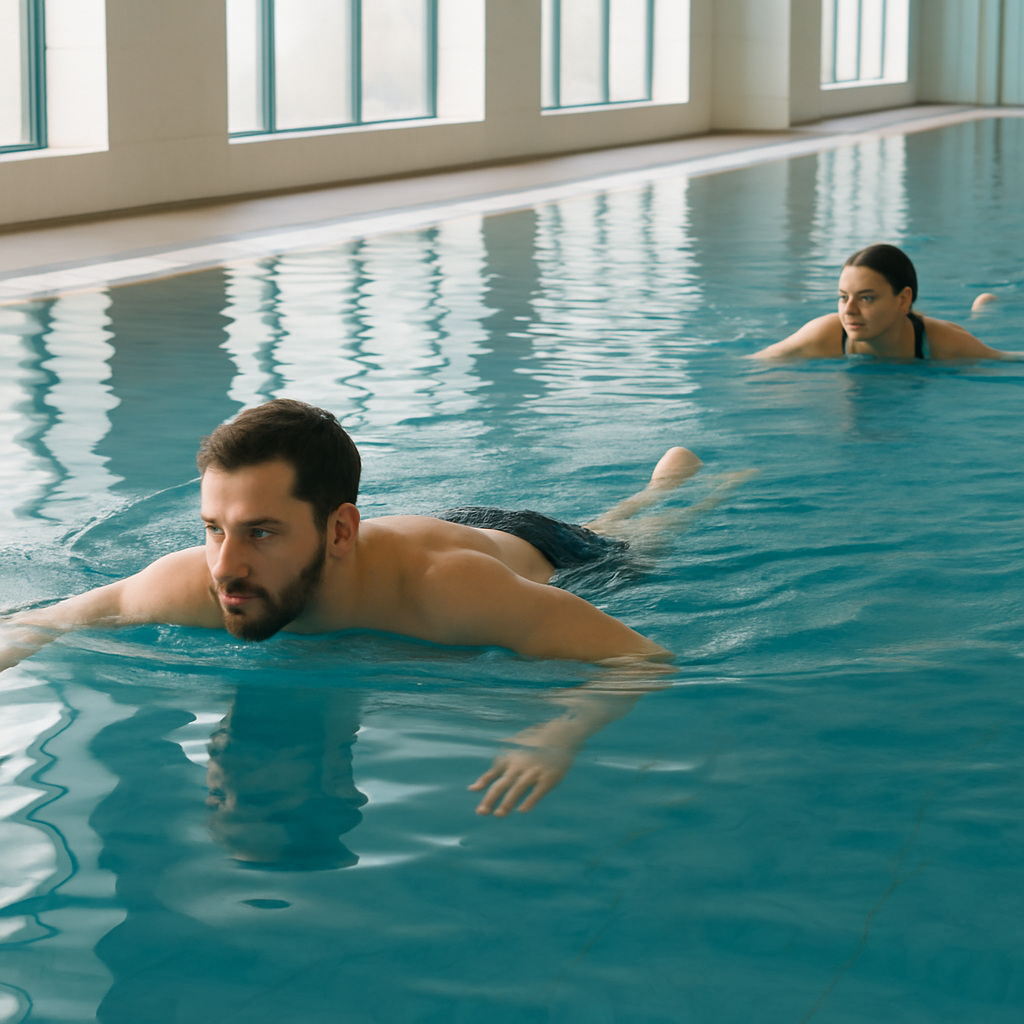
Active Rest Day Ideas for Joint Rejuvenation: Foam Rolling and Dynamic Stretching
While passive stretching and static holds have their place, combining foam rolling with dynamic movement creates a robust active rest protocol. Foam rolling targets myofascial adhesions, reducing muscular tension and restoring blood flow. It prepares tissues for motion, enhances recovery workout results, and primes the neuromuscular system for optimal alignment.
Follow foam rolling with dynamic stretches such as leg swings, thoracic rotations, and inchworms. This sequence opens joint capsules, improves synovial fluid distribution, and increases muscle pliability. Together, these practices qualify as active rest exercises workouts that reduce recovery time while improving biomechanical efficiency. Athletes should focus on tight areas specific to their training volume, especially post-squat or press sessions. This combination fosters structural longevity and helps fortify soft tissue for future training demands.
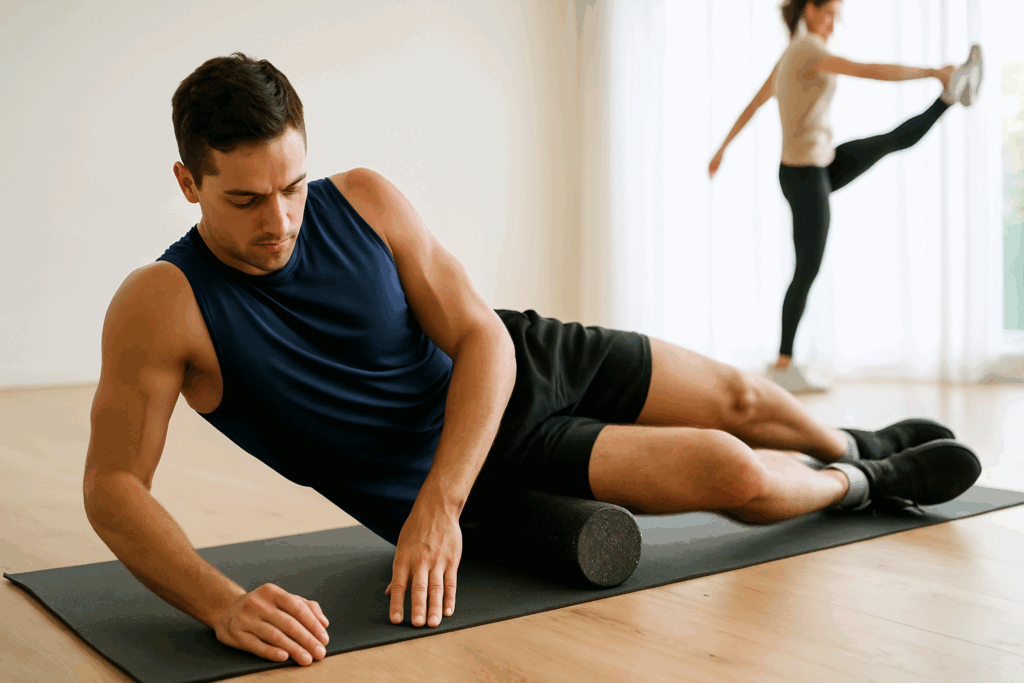
Cycling for Low-Impact Cardiovascular Conditioning
Cycling at a moderate pace serves as an ideal recovery cardio session that enhances heart health while avoiding mechanical strain. Stationary bikes or leisurely outdoor rides activate the lower body without overloading the joints, making it a suitable option following intense leg days. Maintaining cadence and breathing control enhances aerobic metabolism and supports mitochondrial efficiency.
This form of active rest supports lactate clearance and boosts circulation in fatigued muscle tissues. Adjusting resistance and maintaining a steady, rhythmic pace ensures that cycling remains in the active recovery zone. It’s an excellent inclusion in a full body active recovery workout routine, particularly for those who prefer movement with minimal eccentric loading. Cycling also offers psychological respite, providing a meditative and scenic outlet when performed outdoors.
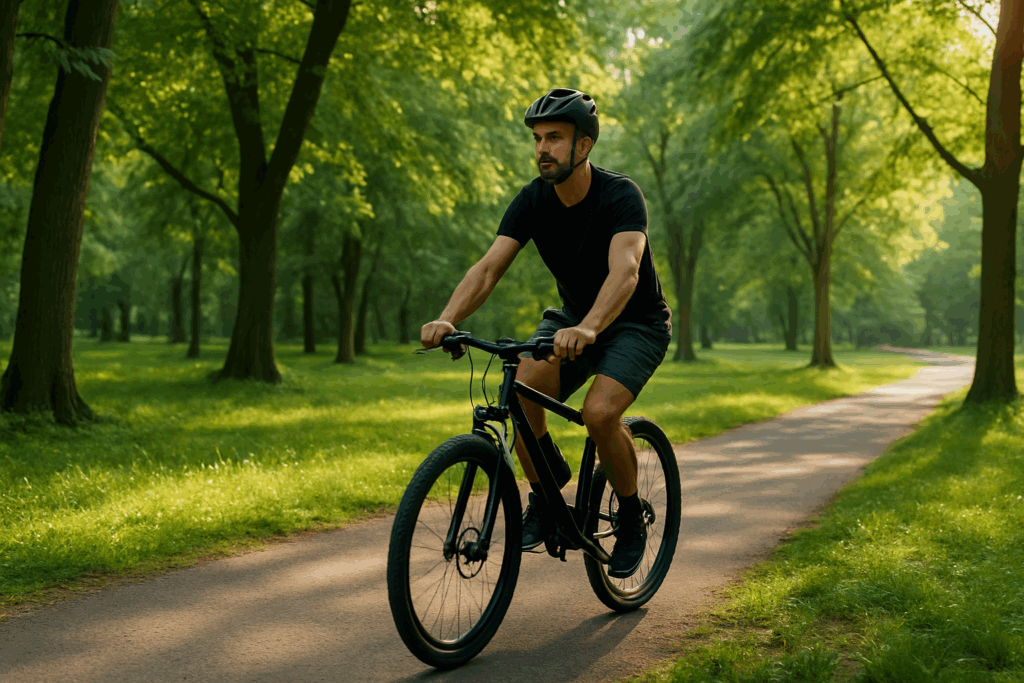
Core Activation and Stabilization Training
Active rest days present an excellent opportunity to engage in deep core work that might be neglected on high-intensity days. Exercises like bird dogs, dead bugs, and pallof presses enhance trunk stability and improve posture without inducing fatigue. These movements train motor control, intra-abdominal pressure, and lumbopelvic coordination.
This type of core training supports better lifting mechanics and spinal integrity, contributing to long-term injury prevention. Core-focused active recovery day sessions also improve breathing efficiency and neural sequencing—foundational aspects of functional performance. Practicing diaphragmatic breathing alongside core activation bridges the gap between mobility and strength. By integrating these movements into your off day workout, you create a stable base for all forms of athletic development.
Hiking as a Mind-Body Recovery Experience
Hiking blends aerobic conditioning with psychological renewal. Traversing trails not only challenges coordination and lower-body endurance but also exposes the mind to nature’s therapeutic effects. Studies have shown that time in natural environments reduces cortisol levels, improves mood, and accelerates physiological recovery.
Incline variation and terrain complexity activate the glutes, calves, and stabilizers, contributing to muscular balance. Unlike urban walks, hiking introduces an element of proprioceptive challenge that sharpens neuromuscular communication. As a recovery day workout, hiking offers immersive movement, mental clarity, and cardiovascular stimulation all at once. It exemplifies the philosophy of active rest by turning leisure into purposeful movement.
Dance and Rhythmic Movement for Neuromuscular Engagement
Dance-based workouts infuse fun, coordination, and low-intensity cardiovascular activity into active recovery. Whether it’s structured like Zumba or freestyle at home, rhythmic movement improves joint fluidity and enhances mind-body synchronization. The irregular patterns of dance diversify movement exposure and mobilize muscles in different planes.
Dance can serve as a recovery day exercise that’s emotionally uplifting and physically restorative. It loosens fascia, increases body awareness, and provides a dynamic range of motion not always emphasized in strength training. This form of recovery training helps reduce muscle guarding and tension from repetitive strength-based patterns. It’s a reminder that movement can be restorative and expressive at once.
Full Body Mobility Drills as a Rest Day Reset
Mobility drills using resistance bands, sliders, or bodyweight movement patterns offer a comprehensive reset for joint articulation. Sequences such as the world’s greatest stretch, shoulder CARs (Controlled Articular Rotations), and hip airplanes target common restriction points in lifters and athletes.
These exercises on rest days serve dual functions: improving performance potential and reducing injury risk. By enhancing capsular mobility and muscular pliability, they allow for more efficient loading in future sessions. When combined with breath control and tempo variation, mobility drills support recovery and nervous system regulation. These drills form a critical part of any full body recovery st protocol that prioritizes longevity and movement quality.
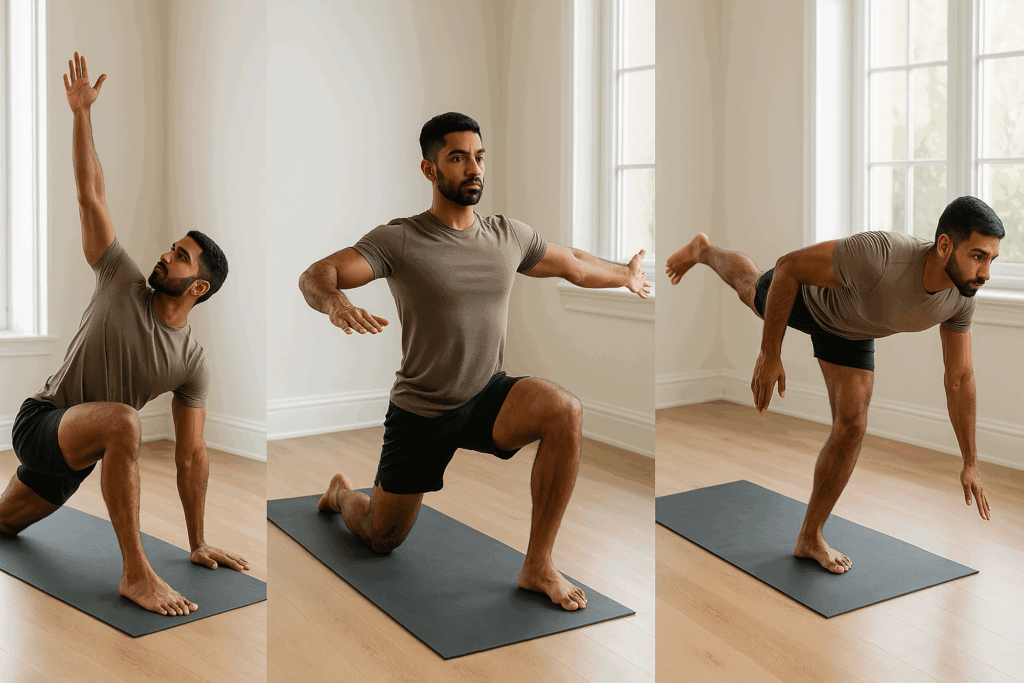
Frequently Asked Questions: Enhancing Recovery with Active Rest Day Ideas
1. What makes active rest different from complete rest, and when should each be used?
Active rest differs from complete rest in that it involves low-intensity movement instead of total inactivity. While complete rest is important after intense periods of overreaching or injury, active rest helps maintain circulation and flexibility without adding further fatigue. Incorporating active rest exercises, like walking or mobility drills, can promote better nutrient delivery and faster clearance of metabolic byproducts. It also helps preserve neuromuscular coordination and reduces the mental stagnation often experienced during sedentary rest. Ideally, complete rest should follow exhaustive events or illness, while active rest day ideas are most effective between moderate to high-intensity training sessions.
2. How can active recovery day sessions enhance mental health and emotional resilience?
Active recovery day practices such as hiking, yoga, or swimming offer more than just physiological benefits—they also serve as mental reset mechanisms. Engaging in rhythmic, low-impact movement helps regulate stress hormones like cortisol and increases the production of feel-good neurotransmitters such as serotonin. Activities like dancing or nature walks provide a mindful break from routine stress, enhancing emotional regulation and self-awareness. These off day workouts reinforce the value of self-care while encouraging positive lifestyle habits. Over time, they contribute to a more sustainable and balanced fitness journey.
3. Are there specific active rest day exercises that help with hormonal balance?
Yes, there are several active rest day exercises that support hormonal regulation. For example, moderate cycling and yoga enhance insulin sensitivity and help reduce inflammation markers such as CRP (C-reactive protein). Additionally, walking and swimming can modulate stress-related hormones like cortisol by stimulating the parasympathetic nervous system. Light mobility flows and breathwork promote the release of growth hormone during rest, aiding in tissue repair. These benefits highlight why active rest day workout strategies are an essential part of recovery training for both male and female athletes.
4. What are some overlooked active recovery examples that deliver exceptional results?
Some highly effective yet underrated active recovery examples include tai chi, underwater walking, fascia flossing with bands, and trampoline rebounding. These exercises on rest days challenge proprioception and joint mobility without inducing strain. Tai chi, for instance, improves neuromotor control and lowers blood pressure, while rebounding supports lymphatic drainage. Such off day exercises are particularly valuable for older adults or those recovering from injury. They demonstrate that effective recovery doesn’t always look like traditional cardio or stretching.
5. How should nutrition and hydration complement an active rest day workout?
Nutrition plays a pivotal role in maximizing recovery during active rest days. Emphasis should be placed on antioxidant-rich fruits and vegetables to combat oxidative stress, along with adequate protein intake to support muscle repair. Staying hydrated is essential to optimize synovial fluid function, especially during mobility and recovery cardio sessions. Including magnesium- and potassium-rich foods—like bananas, spinach, and nuts—can help reduce muscle cramps and improve electrolyte balance. Pairing good recovery workouts with targeted nutrition amplifies adaptation and tissue regeneration.
6. Can a full body active recovery workout contribute to skill development?
Absolutely. A full body active recovery workout allows athletes to focus on refining movement mechanics without the distraction of fatigue. Practicing exercises such as Turkish get-ups, scapular push-ups, or controlled bear crawls helps reinforce proper motor patterns and coordination. These movements are typically neglected during high-intensity days due to the focus on load or volume. However, when performed with attention and control on a recovery day, they enhance kinetic awareness and movement efficiency. This leads to improved performance and injury resilience in future training.
7. What role does sleep play in optimizing active rest?
Sleep is a crucial counterpart to active rest because it consolidates the recovery benefits initiated through movement. During deep sleep, the body produces anabolic hormones like testosterone and human growth hormone that drive muscular repair. Active rest exercises workouts help prime the nervous system for better sleep quality by reducing physical tension and anxiety. Engaging in a structured rest day workout earlier in the day also aligns with circadian rhythms, promoting restorative rest at night. For comprehensive recovery, movement and sleep must function as interconnected pillars.
8. How can you structure a leg recovery workout on an active rest day?
A thoughtful leg recovery workout should incorporate a mix of mobility drills, blood flow stimulation, and light muscular activation. Begin with foam rolling the quadriceps, hamstrings, and calves, followed by dynamic stretches such as leg swings and hip openers. Then perform light cycling or water walking for 15–20 minutes to promote circulation without adding stress. Incorporating active recovery exercises like reverse lunges with bodyweight can also re-pattern motor control. Finish with deep breathing and static stretching to facilitate recovery while enhancing flexibility.
9. What are some effective strategies for planning active rest day ideas across a training week?
Effective programming of active rest day ideas begins with aligning recovery modalities to the intensity of preceding workouts. For example, after heavy squats or deadlifts, opt for a recovery day workout focused on mobility and low-impact cardio like cycling. Midweek active recovery day options might include yoga, aquatic therapy, or a full body recovery st to promote joint integrity. Rotating between active rest exercises ensures varied stimulation without fatigue accumulation. Keep logs to evaluate how each method impacts performance, soreness, and mental focus in subsequent sessions.
10. How do elite athletes incorporate recovery day workouts into periodized training?
Elite athletes use periodization to map out recovery as deliberately as training. Their active rest day ideas often include sport-specific drills at reduced intensity, neuromuscular reeducation, or breathwork-focused sessions. Full body workout recovery strategies are scaled to match the microcycle goals, ensuring cumulative stress does not surpass adaptive capacity. Elite coaches monitor metrics like heart rate variability (HRV), sleep quality, and subjective readiness to adjust recovery workouts accordingly. This scientific approach transforms recovery from a passive process into a proactive performance enhancer.
Conclusion: Building Strength Through Smart Recovery
In the evolving world of strength and performance, recovery is not an afterthought—it’s a cornerstone. The best athletes and most resilient bodies are not defined solely by how hard they train, but by how intelligently they recover. The active rest day ideas explored throughout this article offer a diverse and effective framework for supporting growth, reducing injury risk, and maintaining long-term consistency.
Whether through walking, swimming, yoga, or dynamic mobility, each of these active rest strategies provides unique physiological and psychological benefits. They reinforce the principles of movement, control, and restoration, all while keeping the body engaged without overload. With thoughtful application, these routines transform recovery days into an integral part of strength development.
By embracing these recovery exercises, you build not only physical durability but also a greater awareness of your body’s rhythms and needs. That awareness leads to smarter training, faster healing, and ultimately—lasting strength. Recovery is not the pause between workouts; it’s the bridge to better performance. Choose active rest, and make every day a step toward greater resilience and peak function.
Further Reading:
7 Effective Active Recovery Workouts


